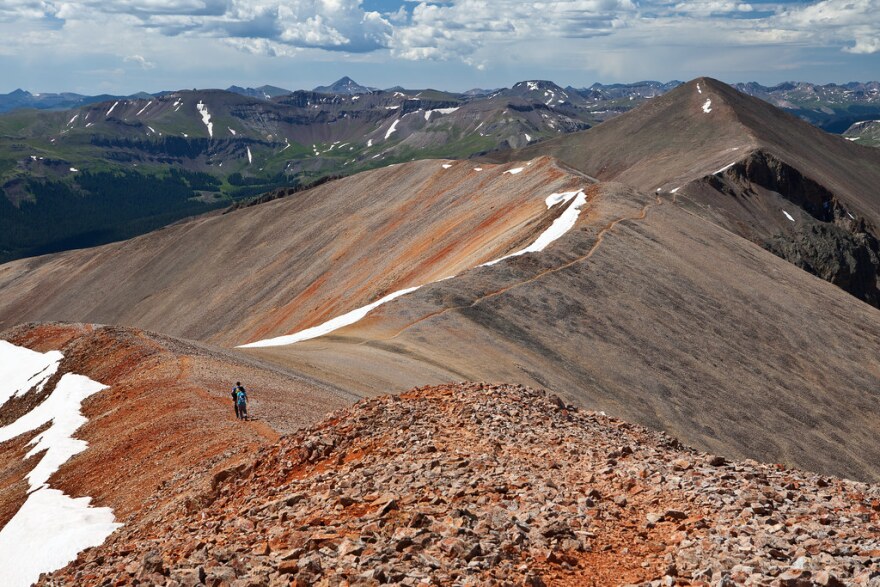Visitors have flocked to Western communities during the pandemic to soak in the region’s public lands. But how many visitors? While the National Park Service closely monitors visitation, national forests and the Bureau of Land Management lack an efficient and cost-effective way to measure foot traffic.
Yet that kind of information, along with data on state and local lands, is crucial for Western communities trying to balance the good and the bad of increased visitation, said Megan Lawson, an economist at Headwaters Economics. The nonpartisan research group that studies community development recommending digital tools to collect such data.
Without accurate information on trail usage, Lawson said communities in the Mountain West face big economic roadblocks.
“Communities with a lot of public lands that are trying to develop economies around outdoor recreation have a really difficult time justifying investments that go along with that when you don't have a great sense for how much recreation is actually occurring on public lands near these communities,” Lawson said.
Trail managers, the report says, often resort to some rather unscientific methods to monitor how many people are using trails, such as counting the number of toilet paper rolls replaced at pit toilets or the number of dog waste bags used at trailheads.
The report points to the paradox confronting fast-growing Western communities adjacent to public lands. These communities benefit from outdoor recreation in a number of ways, Lawson said. For example, people visit areas with wild open spaces, fall in love with those places, decide to move there and then help to diversify local economies when they bring their businesses with them.
At the same time, it means small Western towns are constantly struggling to keep up with the rise in population and visitors. Lawson points to impacts on roads that lack the carrying capacity to accommodate motorists driving to trailheads. The growth strains water and sewer systems. Even search and rescue teams, which are often publicly funded, are stretched thin as they respond to a heightened number of incidents, she said.
The report highlights the tools that could anchor a uniform federal system to monitor land use. Lawson says the toolbox should include social media tags, fitness tracking apps, cell phone data, and internet searches for trails.
“Academic researchers, along with our research, have demonstrated the success of these methods,” she said.
Monitoring which trails people are searching for online can also offer “pretty accurate predictions of what’s going to happen in the future” when it comes to trail use, Lawson said.
“And so there's a real potential for land managers to be able to mitigate some of the impacts of those really big spikes in recreation.”
Still, Lawson acknowledges that using social media tools and cell phone data to build a uniform system presents privacy issues.
To address those concerns, all companies that provide data do some form of "de-identifying" so analysts cannot track individual users, Lawson said. Some strategies include reporting only aggregated measures, like if a trail exceeds, say, 75% of normal usage.
Lawson said concerns around privacy “point to the strength of using multiple novel data sources when modeling recreational use as yet another way to avoid privacy encroachment.”
Researchers at Headwaters and other organizations have also recommended improving the federal Payments in Lieu of Taxes program, which provides funding to communities with federal lands, so that Western towns can obtain more financial support to offset strains to infrastructure. Collecting more accurate data on the use of public lands should inform how that funding is distributed, the report says.
This story was produced by the Mountain West ���ڱ��� Bureau, a collaboration between Wyoming Public Media, Boise State Public Radio in Idaho, KUNR in Nevada, the O'Connor Center for the Rocky Mountain West in Montana, KUNC in Colorado, KUNM in New Mexico, with support from affiliate stations across the region. Funding for the Mountain West ���ڱ��� Bureau is provided in part by the .




